Turinys
Leccinum albostipitatum (Leccinum albostipitatum)
- Padalinys: Basidiomycota (Basidiomycetes)
- Poskyris: Agaricomycotina (Agaricomycetes)
- Klasė: Agarikomicetai (Agaricomycetes)
- Poklasis: Agaricomycetidae (Agaricomycetes)
- Užsakymas: Boletales (Boletales)
- Šeima: Boletaceae (Boletaceae)
- Gentis: Leccinum (Obabok)
- Tipas: Leccinum albostipitatum (Leccinum albostipitatum)
- A red dress
- Krombholzia aurantiaca subsp. ruf
- Raudonasis grybas
- Orange mushroom var. red

vadovas 8-25 cm in diameter, at first hemispherical, tightly clasping the leg, then convex, flat-convex, in old mushrooms it can become cushion-shaped and even flat on top. The skin is dry, pubescent, small villi sometimes stick together and create the illusion of scalyness. In young mushrooms, the edge of the cap has a hanging, often torn into shreds, skin up to 4 mm long, which disappears with age. The color is orange, reddish-orange, orange-peach, very conspicuous.
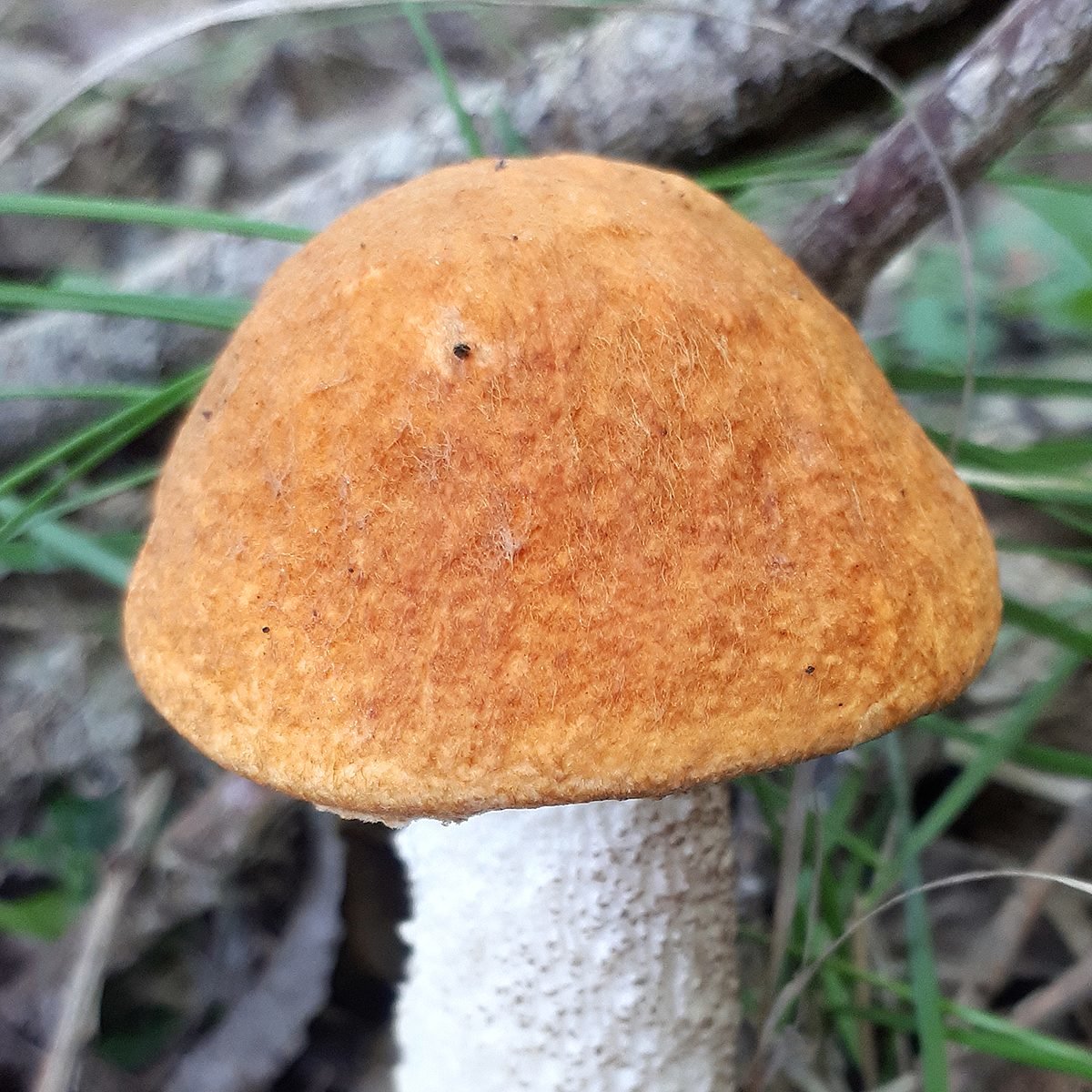
Hymenoforas tubular, adherent with a notch around the stem. Tubules 9-30 mm long, very dense and short when young, light cream, yellowish-white, darkening to yellowish-gray, brownish with age; pores are rounded, small, up to 0.5 mm in diameter, the same color as tubules. The hymenophore turns brown when damaged.
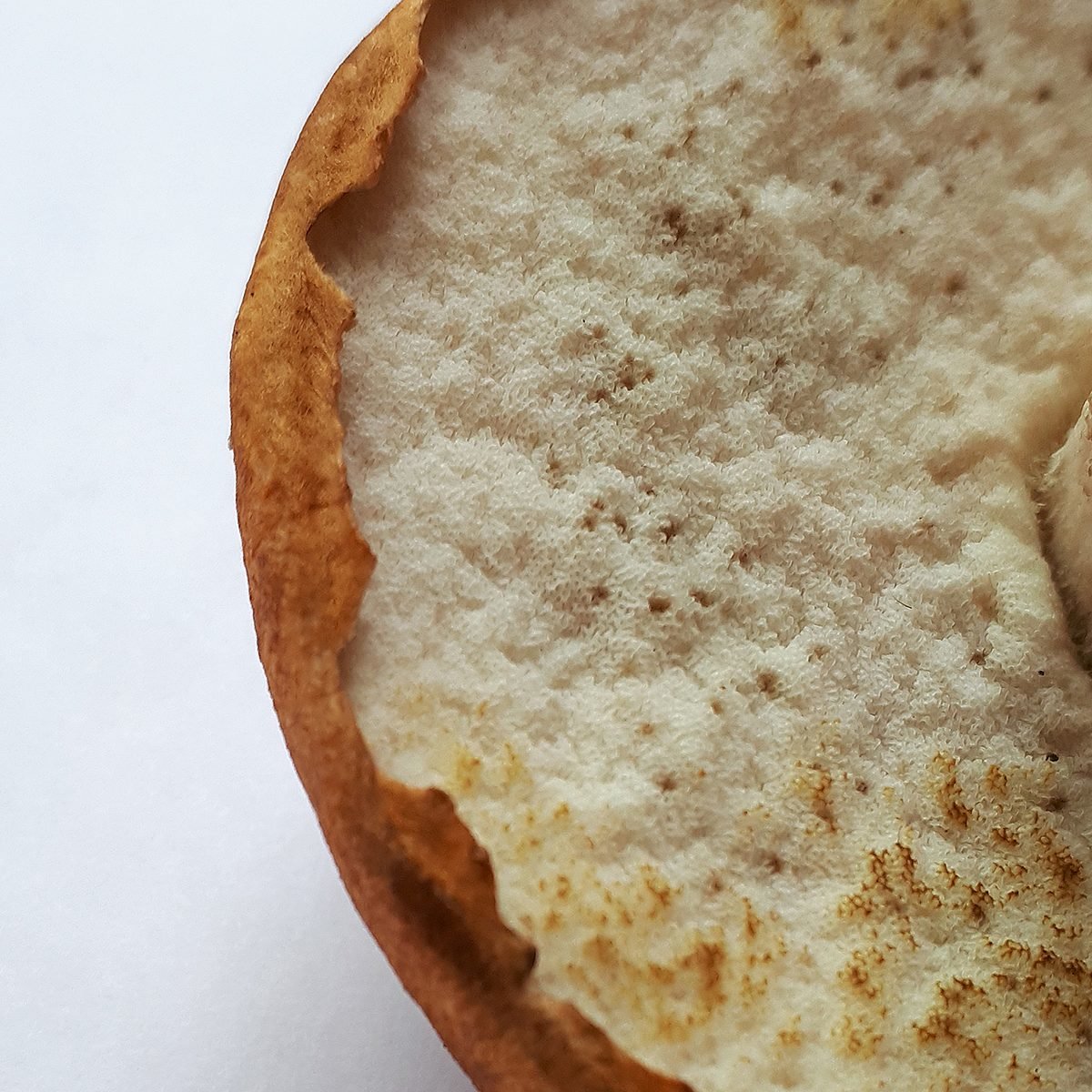
koja 5-27 cm long and 1.5-5 cm thick, solid, usually straight, sometimes curved, cylindrical or slightly thickened in the lower part, in the upper quarter, as a rule, noticeably tapering. The surface of the stem is white, covered with white scales, darkening to ocher and reddish brown with age. Practice also shows that the scales, being white, begin to darken rapidly after cutting the mushroom, so the mushroom picker, having collected white-legged beauties in the forest, upon arrival home, may be very surprised to find boletus with an ordinary motley leg in his basket.
The photograph below shows a specimen on the stem of which the scales have partially darkened and partially remain white.
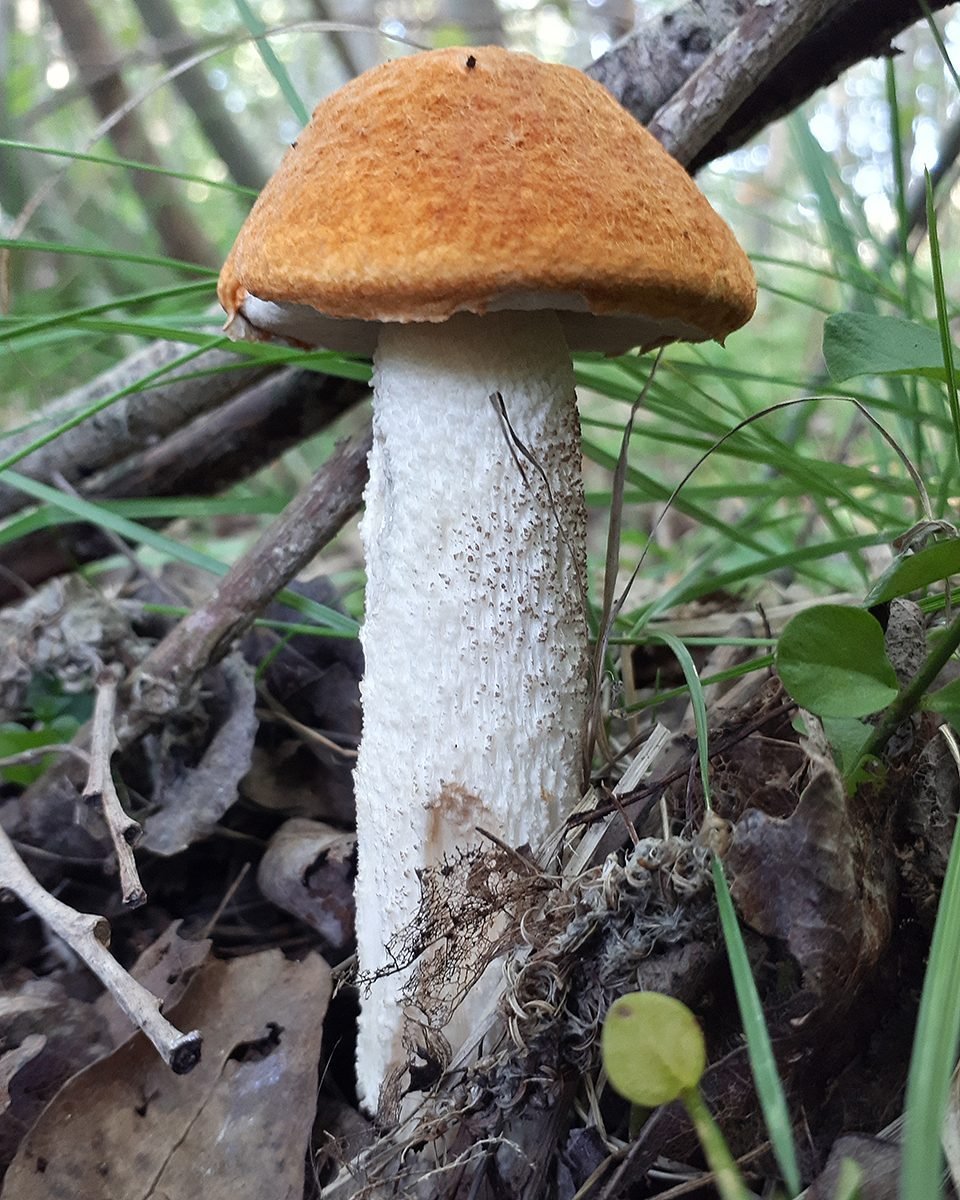
Pulp white, on the cut rather quickly, literally before our eyes, turns red, then slowly darkens to a gray-violet, almost black color. At the base of the legs may turn blue. Smell and taste are mild.
sporų milteliai yellowish.
Nesutarimai (9.5) 11.0-17.0*4.0-5.0 (5.5) µm, Q = 2.3-3.6 (4.0), on average 2.9-3.1; spindle-shaped, with a conical top.
Basidia 25-35*7.5-11.0 µm, club-shaped, 2 or 4 spores.
Hymenocysts 20-45*7-10 microns, bottle-shaped.
Caulocystidia 15-65*10-16 µm, club- or fusiform, bottle-shaped, the largest cystidia are usually fusiform, with blunt apexes. There are no buckles.
The species is associated with trees of the genus Populus (poplar). It can often be found on the edges of aspen or mixed with aspen forests. Usually grows singly or in small groups. Fruiting from June to October. According to [1], it is widely distributed in the Scandinavian countries and mountainous regions of Central Europe; it is rare at low altitudes; it was not found in the Netherlands. In general, taking into account the fairly broad until recently interpretation of the name Leccinum aurantiacum (red boletus), which includes at least two European species associated with aspen, including the one described in this article, it can be assumed that white-legged boletus is distributed throughout throughout the boreal zone of Eurasia, as well as in some of its mountainous regions.
Edible, used boiled, fried, pickled, dried.
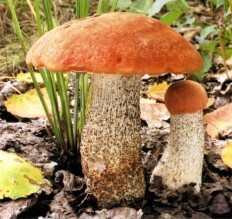
Raudonasis baravykas (Leccinum aurantiacum)
The main difference between red and white-legged boletus lies in the color of the scales on the stalk and the color of the cap in both fresh and dried fruiting bodies. The first species usually has brownish-red scales already at a young age, while the second begins life with white scales, darkening slightly in older fruiting bodies. However, it should be taken into account that the leg of the red boletus can also be almost white if it is tightly covered with grass. In this case, it is better to focus on the color of the cap: in the red boletus it is bright red or reddish-brown, when dried it is reddish-brown. The color of the cap of the white-legged boletus is usually bright orange and changes to a dull light brown in dried fruiting bodies.[1].
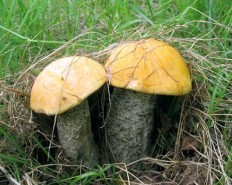
Geltonai rudas baravykas (Leccinum versipelle)
It is distinguished by a yellowish-brown color of the cap (which, in fact, can vary over a very wide range: from almost white and pinkish to brown), gray or almost black scales on the stem and a hymenophore that is gray in young fruiting bodies. Forms mycorrhiza with birch.
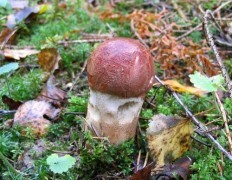
Pušinis baravykas (Leccinum vulpinum)
It is distinguished by a dark brick-red cap, dark brown, sometimes almost black wine-colored scales on the stem, and a greyish-brown hymenophore when young. Forms mycorrhiza with pine.
1. Bakker HCden, Noordeloos ME A revision of the European species of Leccinum Gray and notes on extralimital species. // Personality. — 2005. — V. 18 (4). — P. 536-538
2. Kibby G. Leccinum revisited. A new synoptic key to species. // Field Mycology. — 2006. — V. 7 (4). — P. 77–87.









